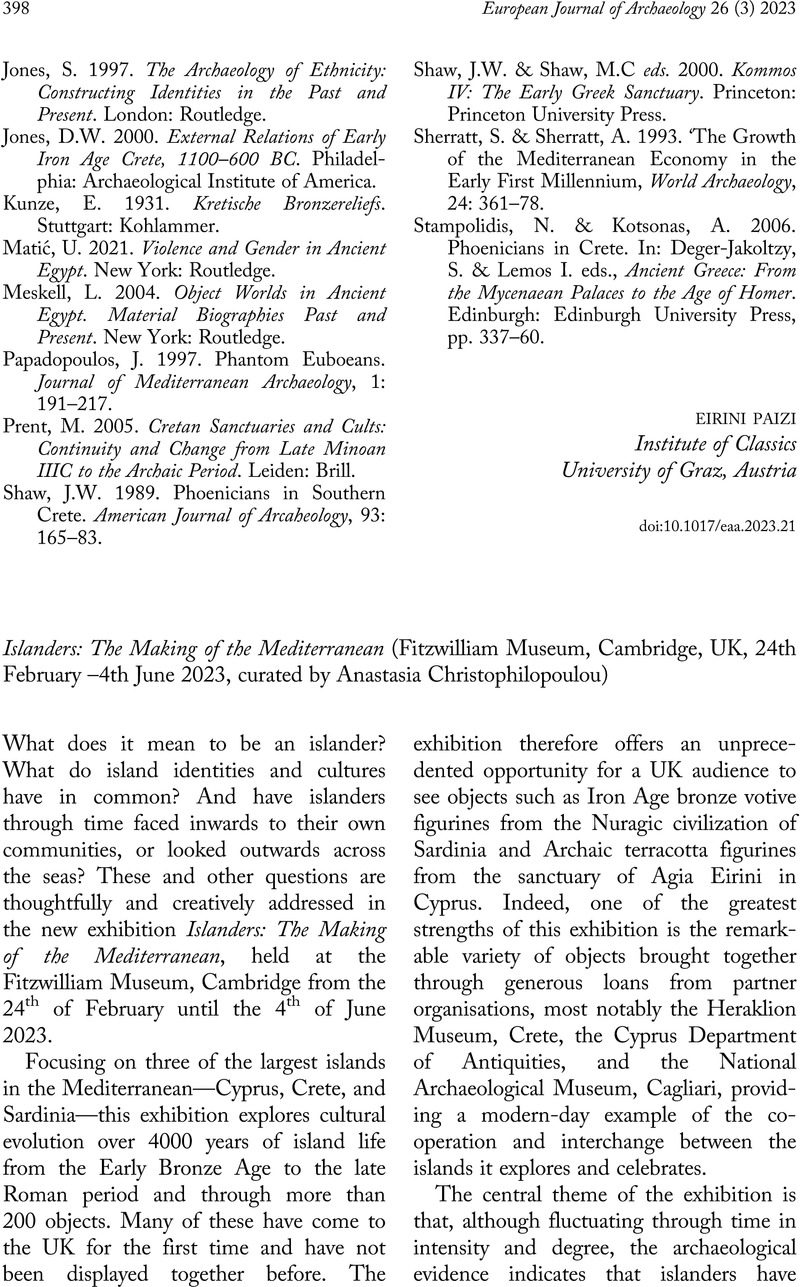Christophilopoulou, A. 2019.
Investigating ancient Cypriot food practices and diets as part of the narratives developed for the ‘Being an Islander: Art and Identity of the Large Mediterranean Islands’ exhibition. In:
Cypriot Archaeology, Pre-Modern Material Culture, and Cultural Heritage in the UK, International Conference, Institute of Archaeology,
University College London, April 2019.
Google Scholar 